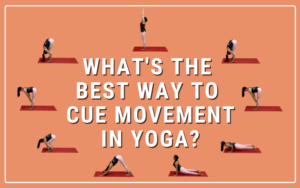Cueing Techniques for Yoga
The art of yoga instruction requires more than just knowing your poses and sequences, it involves understanding how to speak effectively to your students. Cueing is one of the most important yoga teacher skills, as it’s how you guide your students through the class, providing them with the confidence and clarity they need to progress safely and deeply.
Verbal cueing course for yoga teachers can be helpful for beginners and advanced students alike. While they provide a clear structure for your classes, they can also help to set the tone, create an inviting space, and encourage trust in your students.

Cues are important to convey during class, but they must be used sparingly and wisely. Over-cuing will cause your students to become overstimulated and distracted from their experience in class. Using active language in yoga cues is the best way to deliver precise instructions, while still maintaining a sense of ease and grace.
Advanced Cueing Techniques for Yoga
In some cases, yoga teachers may choose to cue the most complex version of a pose first and then demonstrate how to move into a simpler variation of the pose. This can be a great way to motivate your students and show them what is possible with focus, strength, and practice. However, this approach can also demoralize students who don’t feel able to achieve the advanced version of a pose and may feel discouraged from trying.
It’s important to offer your students a variety of options for movement throughout class, so that they can find a pose that works for them. Often, a simple name for a posture is all that’s needed to get students started in a pose, but adding an extra cue can add depth to the experience. For example, you might want to cue “reach back through the shins” or “engage your belly button and pull the shoulder blades away from the back body” before offering students an opportunity to take boat pose.
Another useful way to cue is to offer sensory cues that encourage your students to use their sense of touch, taste, smell, and sound in their practice. Engaging the senses is a powerful tool for mindfulness, allowing yoga students to connect with their body-minds and ground themselves in the present moment.
Finally, verbal cues that ask students to close their eyes in a balance posture or for a forward fold can force them to concentrate on the sensation of moving through the pose with precision. Closing their eyes also helps them to slow their breath and focus on the sound of their own breathing, preparing them for a more introspective part of the practice. Incorporate these cues into your classes to support the meditative side of yoga and encourage students to trust their own abilities to move through the poses they’re capable of. After all, yoga isn’t a competition, it’s about finding the right pose for each student’s unique physicality and ability. This teaches your students to respect themselves and trust their bodies, both in their yoga practice and in the rest of their lives.
Leave a Reply